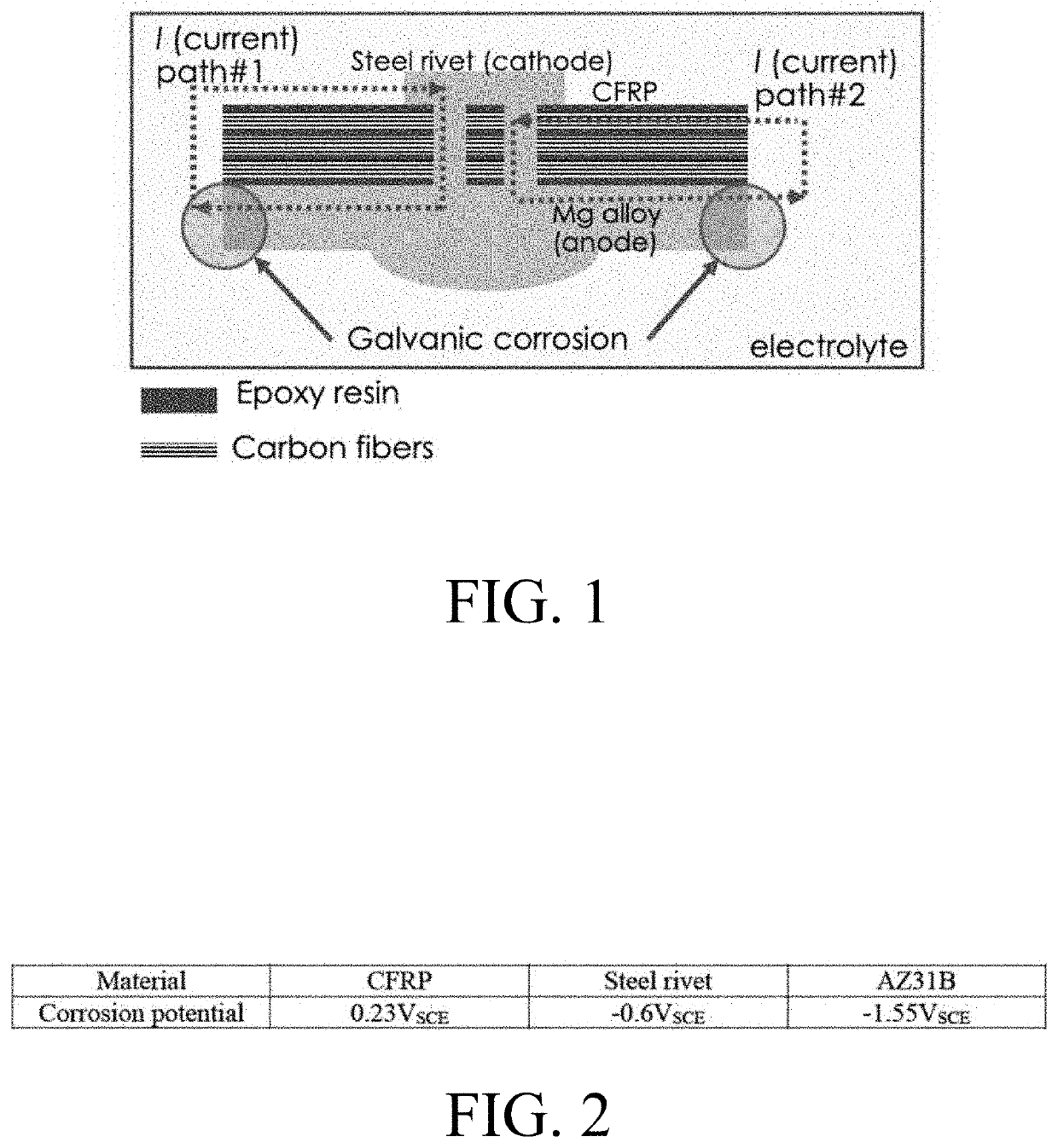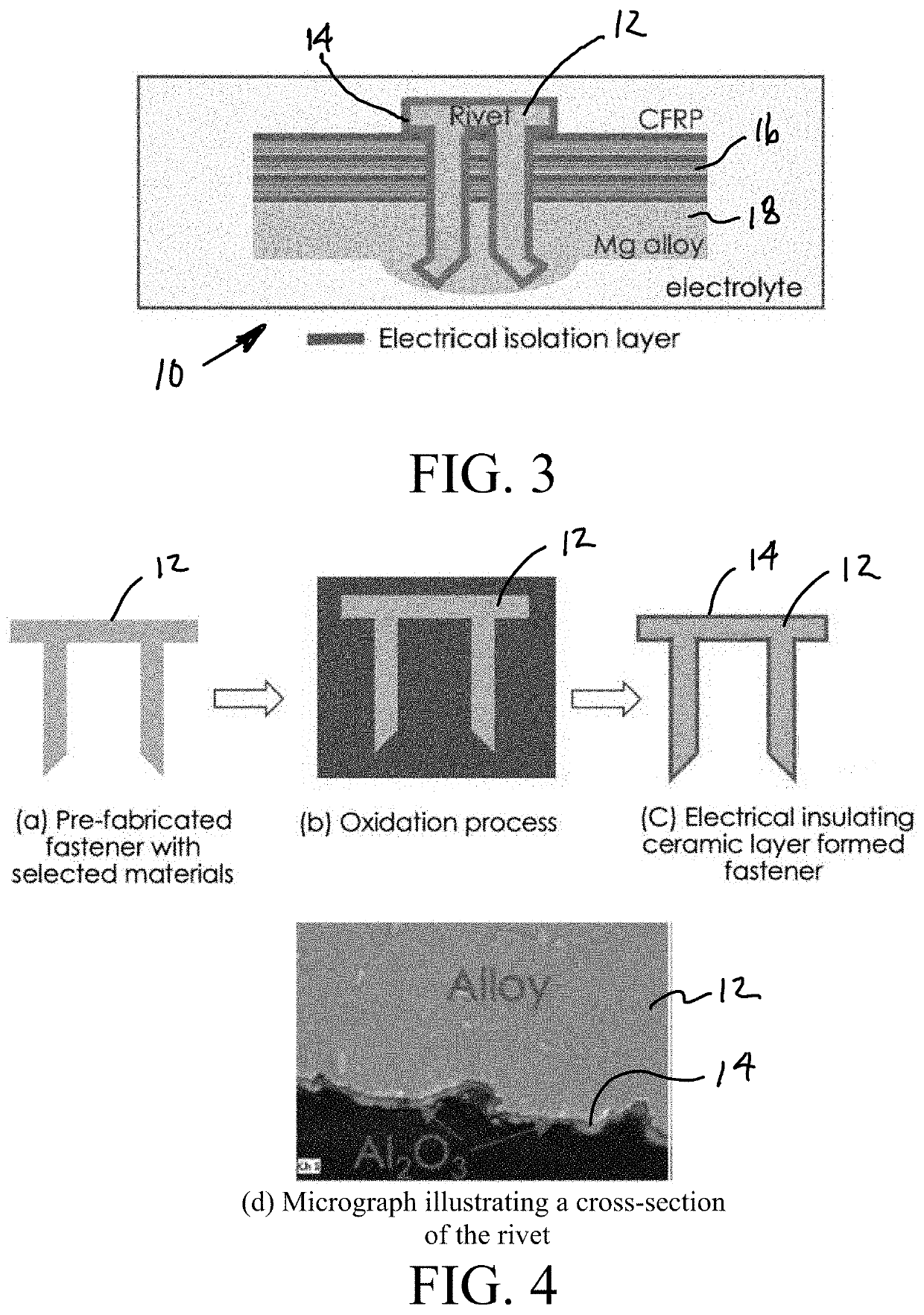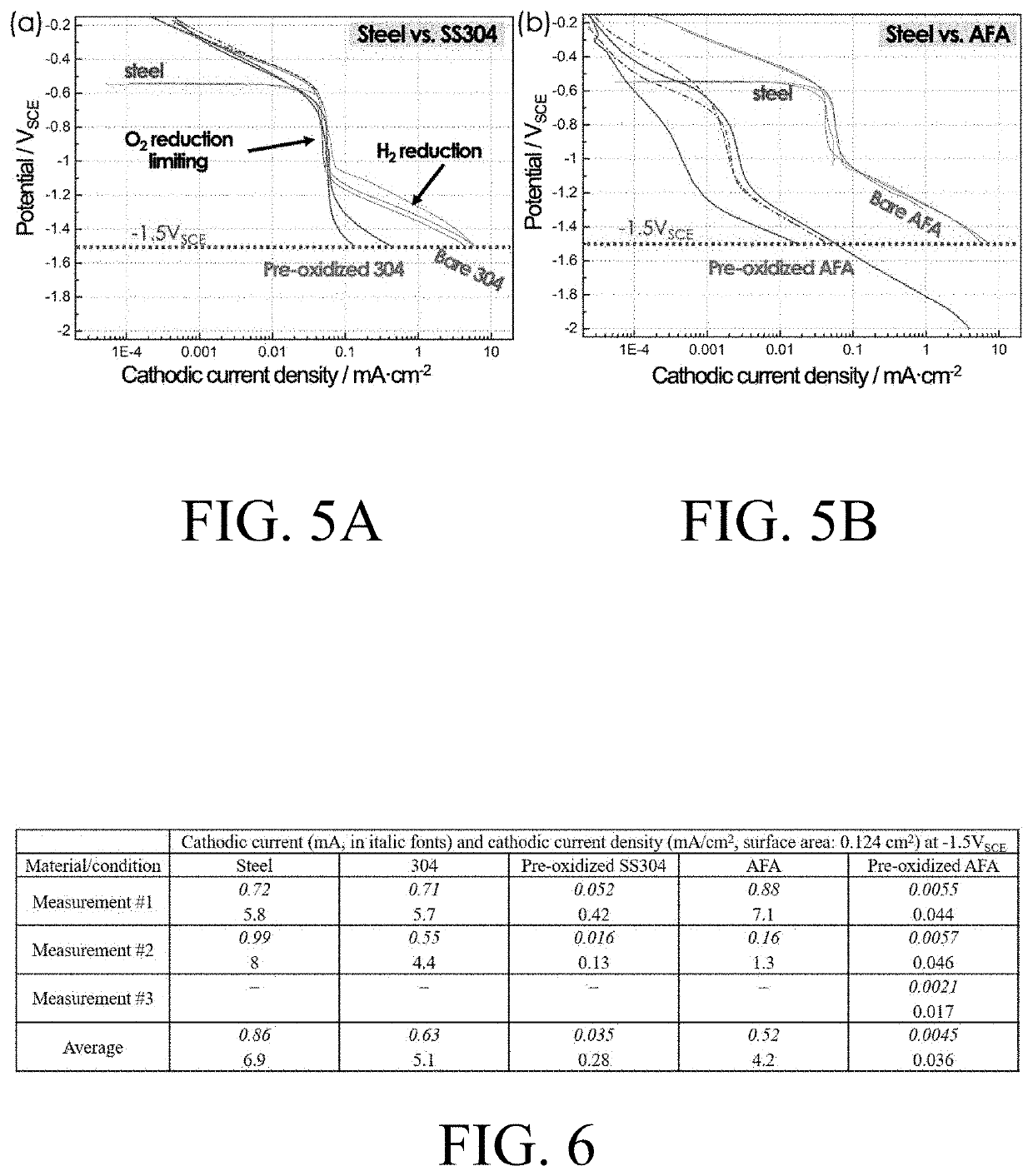Fastener joint and associated method for avoiding corrosion of dissimilar material fastener joints
a technology of dissimilar material and fastener, which is applied in the direction of threaded fasteners, screws, contact member materials, etc., can solve the problems of dissimilar material corrosion, local softening of mg alloy, and accelerate the corrosion of anodic materials in aqueous corrosive environments
- Summary
- Abstract
- Description
- Claims
- Application Information
AI Technical Summary
Benefits of technology
Problems solved by technology
Method used
Image
Examples
Embodiment Construction
[0044]The present invention provides a fastener 12 for use in joining dissimilar materials, a method for manufacturing a fastener 12 for use in joining dissimilar materials and a multi-material joint 10 including dissimilar materials joined by a fastener 12 in accordance with an embodiment of the present invention. Referring to FIGS. 3 and 4, the various aspects of the present invention are associated with a fastener 12 having an external surface that includes an adherent, electrically insulating oxide layer 14 that was grown in place on the surface of the fastener 12 in a pre-oxidation process. As will be appreciated from the description herein, the fastener 12 may be referred to as the “bare fastener” prior to the pre-oxidation process and subsequently as the “pre-oxidized fastener” following the pre-oxidation process. The oxide layer 14 may include essentially any oxide in an electrically resistive phase, such as an aluminum oxide (e.g. Al2O3), a chromium oxide (e.g. Cr2O3), a si...
PUM
| Property | Measurement | Unit |
|---|---|---|
| Temperature | aaaaa | aaaaa |
| Temperature | aaaaa | aaaaa |
| Temperature | aaaaa | aaaaa |
Abstract
Description
Claims
Application Information
 Login to View More
Login to View More - R&D
- Intellectual Property
- Life Sciences
- Materials
- Tech Scout
- Unparalleled Data Quality
- Higher Quality Content
- 60% Fewer Hallucinations
Browse by: Latest US Patents, China's latest patents, Technical Efficacy Thesaurus, Application Domain, Technology Topic, Popular Technical Reports.
© 2025 PatSnap. All rights reserved.Legal|Privacy policy|Modern Slavery Act Transparency Statement|Sitemap|About US| Contact US: help@patsnap.com



